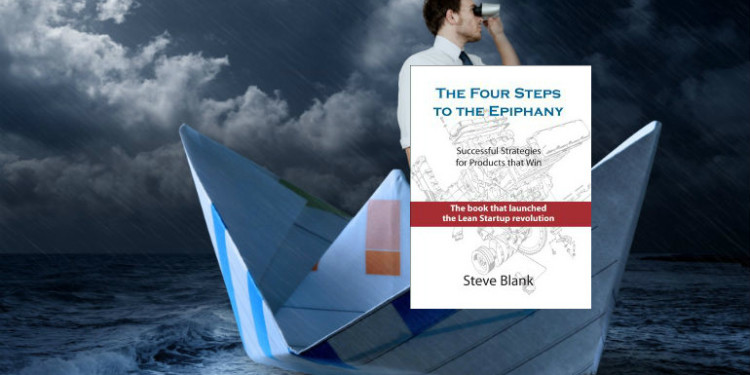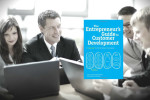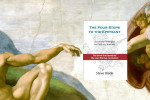Finding your customers as you build your product

Customer Development puts customer understanding and validation on equal footing with traditional product development processes and ensures that when the product is ready, customers have been identified, and involved and are ready to buy.
The Four Steps to the Epiphany by Steve Blank
The Four Steps to the Epiphany initiated the Customer Development revolution by identifying patterns of success for startups. Blank says he was inspired to write the book when he realized there were “repeatable patterns of business behavior that could explain the heretofore unexplainable.” He believes product development processes as practiced by many companies and teams are destined to fail because they are focused on activities “inside the building” instead of getting out and understanding customer needs. Startups frequently focus on producing a product and neglect developing a validated understanding of their customer, market, and sales roadmap.
The book contains a detailed set of flowcharts and processes for each of the four phases with detailed checklists and activity descriptions that walk you through all the phases. Blank also includes various case studies from real startups to introduce the phases. Although it is very detailed, Blank adds a lot of real-world examples and commentary that make the Customer Development story memorable.
Companies need a parallel process to Product Development; one dedicated to bringing customers and their needs head-first into the new product introduction process–before the product is ever launched or shipped
Blank begins by discussing the familiar product development process used by many companies:
He points out that customers are not represented prominently in this model even though the greatest risk to most startups and product development efforts is in the development of customers and markets, not new products. The lack of customers and a solid business model is what causes most entrepreneurial efforts to fail. Customer Development remedies this by constructing and validating customer need and the financial model as part of the overall new offering development process. “Getting outside the building” to meet real customers and test your hypotheses are the building blocks for success.
Learning and discovering who a company’s initial customers will be, requires a separate and distinct process from product development.
Another problem with this model is that the focus is on the launch of the product rather than the acquisition of the first customers. If you do not understand exactly who you are selling to and why they would buy from you, having a product is not sufficient for success. Similarly, there is an emphasis on execution rather than learning and discovery. In the early days of a new enterprise, meeting and establishing relationships with future customers is a critical activity that is distinct from effectively producing a product or service.
The traditional product development model also does include have meaningful sales, marketing, and business development metrics. Significant milestones related to finding customers, developing the market, and validating the business model are not included in the traditional product development model.
Customer Development
Blank’s Customer Development model consists of four iterative processes:
- Customer Discovery – who are the customers for your product or service? is the problem you are solving important to them?
- Customer Validation – proving you have found your customers and market by building repeatable sales roadmaps and playbooks that will be used by field sales and marketing teams
- Customer Creation – creating and funneling end-customer demand into the company’s sales channel
- Company Building – the point at which the company transitions from informal learn and discover mode to functionally specialized groups (e.g., sales, marketing, business development)
Customer Discovery
The Customer Discovery phase consists of stating and testing six core hypotheses: product, customer problem, distribution & pricing, demand creation, market type, and competition. This is done through successive customer visits and conversations with your advisory board. Blank stresses that the goal is to develop “a product for the few, not the many”. Therefore, understanding all the needs of all your possible customers and identifying all possible features and benefits is not required.
A startup should focus its efforts on providing a product for an early set of customers who buy into the startup’s vision. Blank calls these customers “earlyvangelists” because they are not only enthusiastic and vocal, but also willing to pay. Earlyvangelists have a problem, understand they have a problem, are actively searching for a solution and have a timetable for finding a solution, have put together a piecemeal solution, and have or can acquire budget to solve the problem. It is by working with these early customers that the team will get the feedback necessary to improve the product or service.
The purpose of Customer Discovery is to identify those key visionary customers, understand their needs, and verify your product solves a problem they are willing to pay to have solved–or not.
Instead of asking customers what they need, Blank advocates identifying customers for what you are already creating. As the Product Development team is starting the process of building the product, the Customer Development team should be quickly catching up by increasing their customer knowledge so that by the time the product ships, there are already customers. The first version of the product should be “good enough for our first paying customers.”
Throughout the Customer Discovery phase, a detailed set of questions about the customer are being answered. These include identifying decision makers, their influencers, and the financial metrics by which they evaluate success. Specific demand creation strategies are also tested–how exactly will you communicate your offer to your customers? Also, hypotheses about the market and competitive situation are tested against reality to ensure the startup understands the environment it is entering.
Customer Validation
The Customer Validation step “prepares the company for its first attempt at selling a product” by articulating the value proposition, preparing sales collateral, developing a distribution channel plan, and hiring a “sales closer”. Each of these deliverables relies on a the detailed customer and buyer insights that were identified in previous phases of the process. Here, sales efforts are focused on the first set of “earlyvangelists” in order to get feedback for product development. The goals of the Customer Validation step are sales readiness, sales to the “earlyvangelists”, positioning development, and verification of the hypotheses from the Customer Discovery phase.
In the chapter on Customer Validation, Blank provides detailed sales roadmap advice including how to identify decision makers, influencers, and access points within the organization. There are sample roadmaps which identify specific strategies for selling to enterprise customers.
Customer Creation
The Customer Creation phase is founded on four building blocks: year one marketing objectives, company and product positioning, company and product launch plan, and demand creation plan. This phase culminates in the launch of the company and/or product. After identifying customers and learning about them, Customer Creation creates the strategies that will be used to reach more customers on a repeatable basis. Blank puts the heavy marketing spend after acquisition of the first set of customers to decrease the risk of burning up its cash too early in the cycle before it has achieved sufficient learning about its customers.
Company Building
Finally, the Company Building phase involves moving from “earlyvangelists” to mainstream customers and, in the process, building internal culture, processes, and organizational structure.
More on Customer Development
Steve Blank’s blog
Building a Path to Customers from Day 1








Nice summary of Customer Discovery.
If you find The Four Steps to the Epiphany difficult to get into there is a great book to introduce this for entrepreneurs at http://custdev.com/ very useful, very easy to read
And on Steve Blank’s blog you will see his new book is just launching and he is teaching an online class from Stanford which will also be soon
[…] Finding your customers as you build your product […]